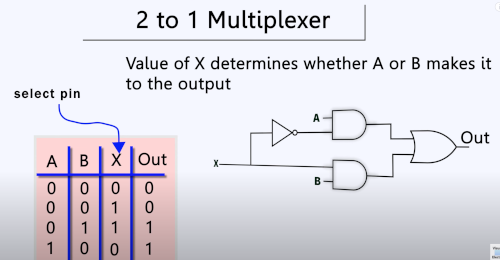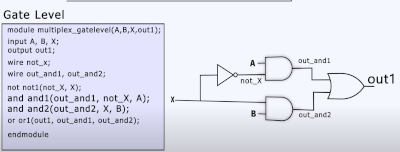Verilog Language: Difference between revisions
Jump to navigation
Jump to search
| Line 10: | Line 10: | ||
=Combinational Logic= | =Combinational Logic= | ||
This is where the outputs are a simple function of the inputs. (Sounds like pure functions | This is where the outputs are a simple function of the inputs. (Sounds like pure functions | ||
=2 to 1 Multiplexer= | |||
This example shows the 3 approaches we can use to describe the hardware | This example shows the 3 approaches we can use to describe the hardware | ||
Revision as of 06:24, 17 December 2024
Introduction
This page is meant to help understand how to approach the language. There are three levels of abstraction.
Way to describe Hardware
- Gate Level
- Dataflow Level
- Behavioral Level
Types of Logic
- Combinational Logic
- Sequential Logic
Combinational Logic
This is where the outputs are a simple function of the inputs. (Sounds like pure functions
2 to 1 Multiplexer
This example shows the 3 approaches we can use to describe the hardware
Gate Level
This was quite useful as I have some knowledge of gates and boolean logic so it starts to make a bit of sense in verilog. Here is the truth table for the 2 to 1 multiplexer

To model this at the gate level we could do this

Sequential Logic
Sequential logic uses memory and state